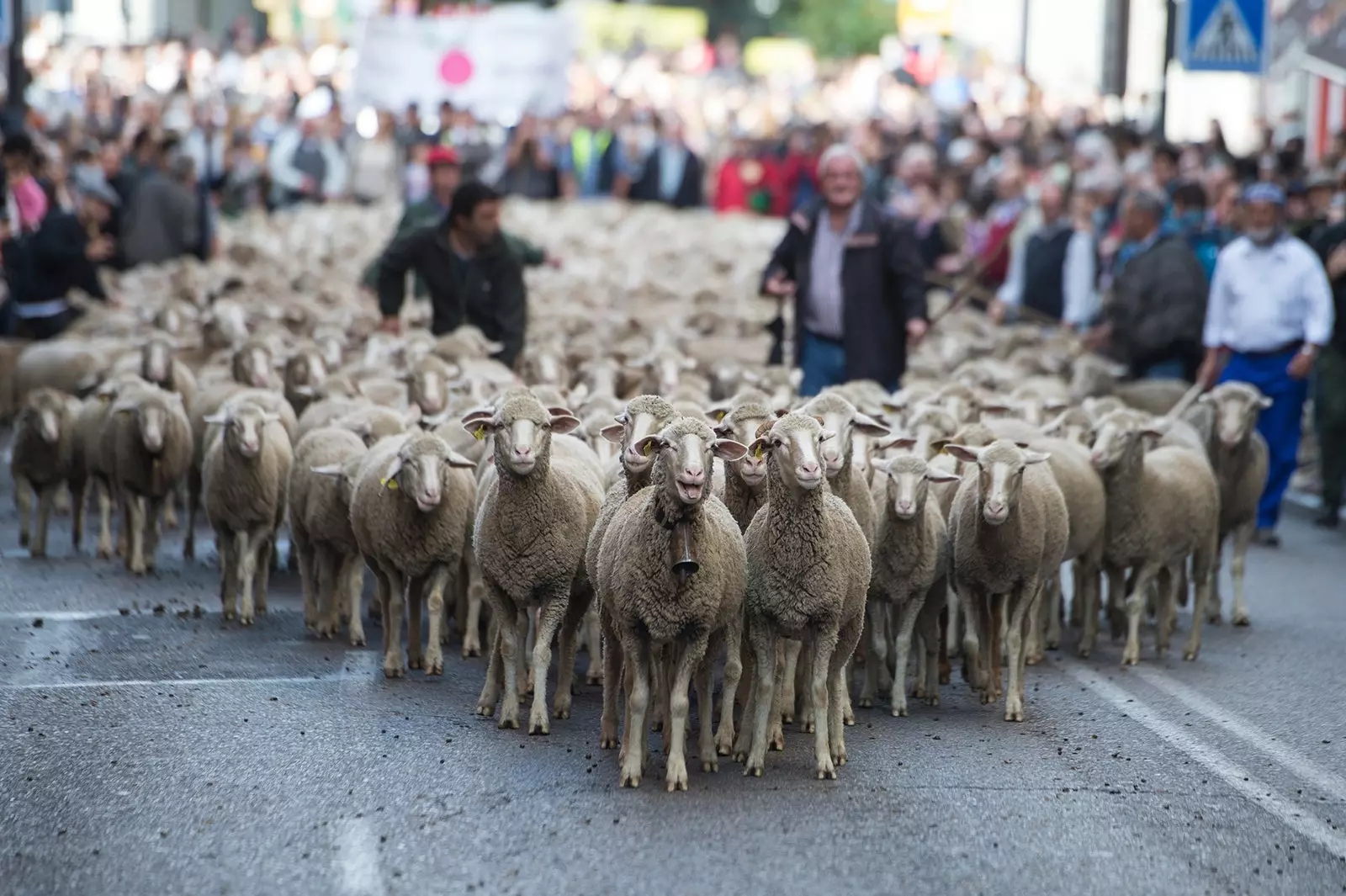
'All the single ladies'
Transhumance is the "movement of livestock from north to south, always looking for the best climatic conditions and the best pastures", they tell us from the Association Transhumance and Nature to explain what we will see this Sunday, when a herd of 1,800 merino sheep and 100 red goats cross the streets of Madrid. These really are the traffic jams that we like.
It will be a weekend of events, of go-go activities to celebrate that 601 years ago, back in the month of March 1418, the Good Men of the Mesta de los Pastores and the Attorneys of the Council of the Villa de Madrid signed the Agreement “so that the Mestiño herds pass and rest for four days in their communal meadows and pastures”, as can be read in the document provided by the Association.
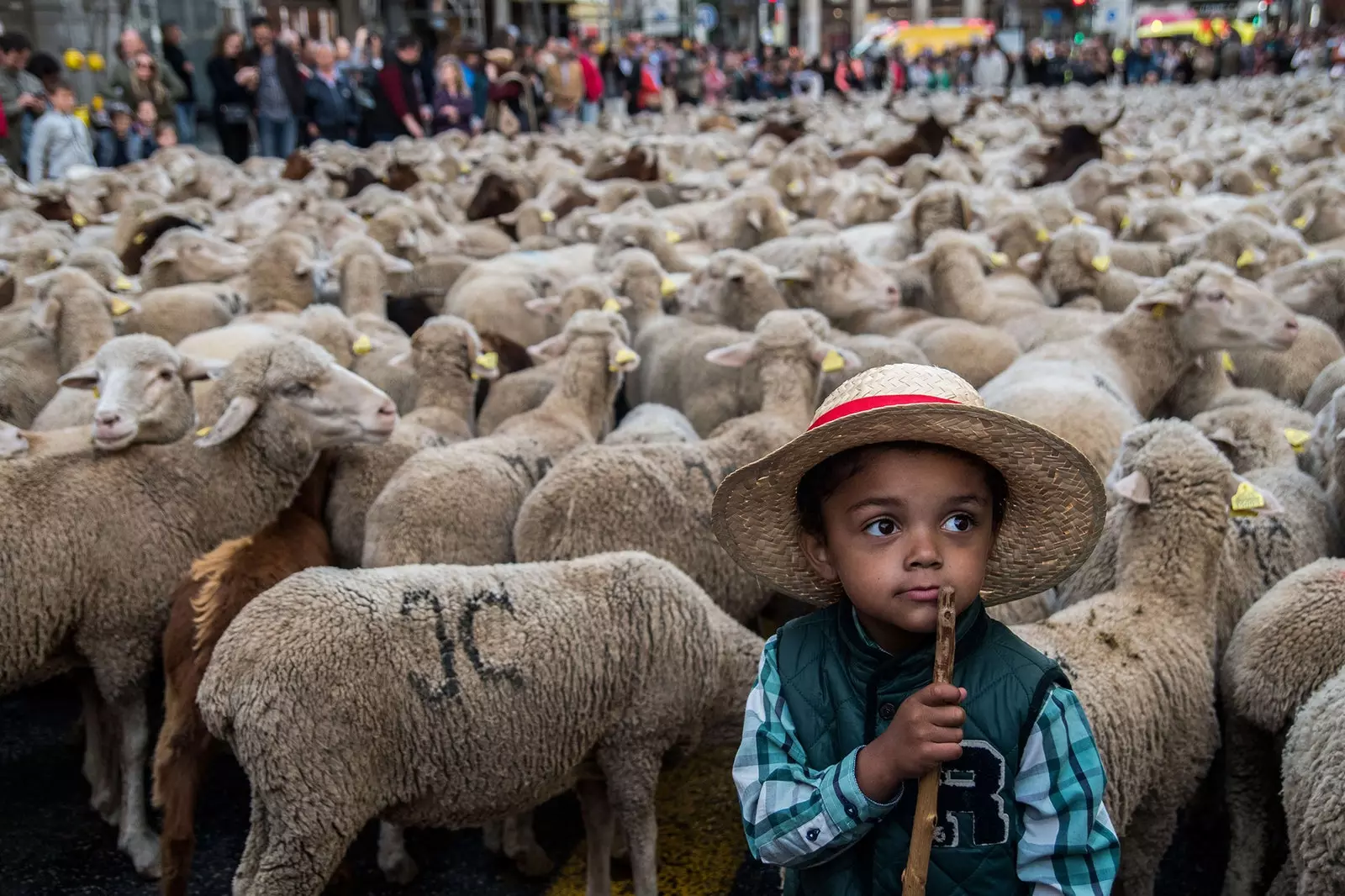
Nicolás guides the herd during the 2017 transhumance festival
workshops woolen, discussions on women and the challenge of the rural, tastings of honeys or natural wines, construction of pastoral musical instruments, jotas from La Mancha... will be happening in the Crystal Gallery of the Cibeles Palace and in the Casa de Campo like a warm-up for Sunday.
Then yes; then the herd will take the center of Madrid in a walk that will begin at 10:30 a.m., when you leave the Casa de Campo through the Puerta del Rey, to go to the Calle Mayor, cross the Puerta del Sol and reach the Plaza de Cibeles at about 12:30 p.m. There, it will proceed, as it was signed in 1418, to the payment of 50 maravedis for every thousand sheep and goats that cross the lands of La Villa.
Later, they will return to the Casa de Campo following the same route and at 6:00 p.m. they will say goodbye to the shepherds and flock that, coming from the ports of Valverde de la Sierra, will be ready to continue their journey. to Fresnedillas de la Oliva where they will spend the winter.
Picturesque, yes; curious, too; a way to make visible and make this livestock practice present, even if only for a few hours, in an urban environment unaware of the living conditions of the shepherds and of the importance that transhumance has for the environment and what it could contribute to the fight against climate change.
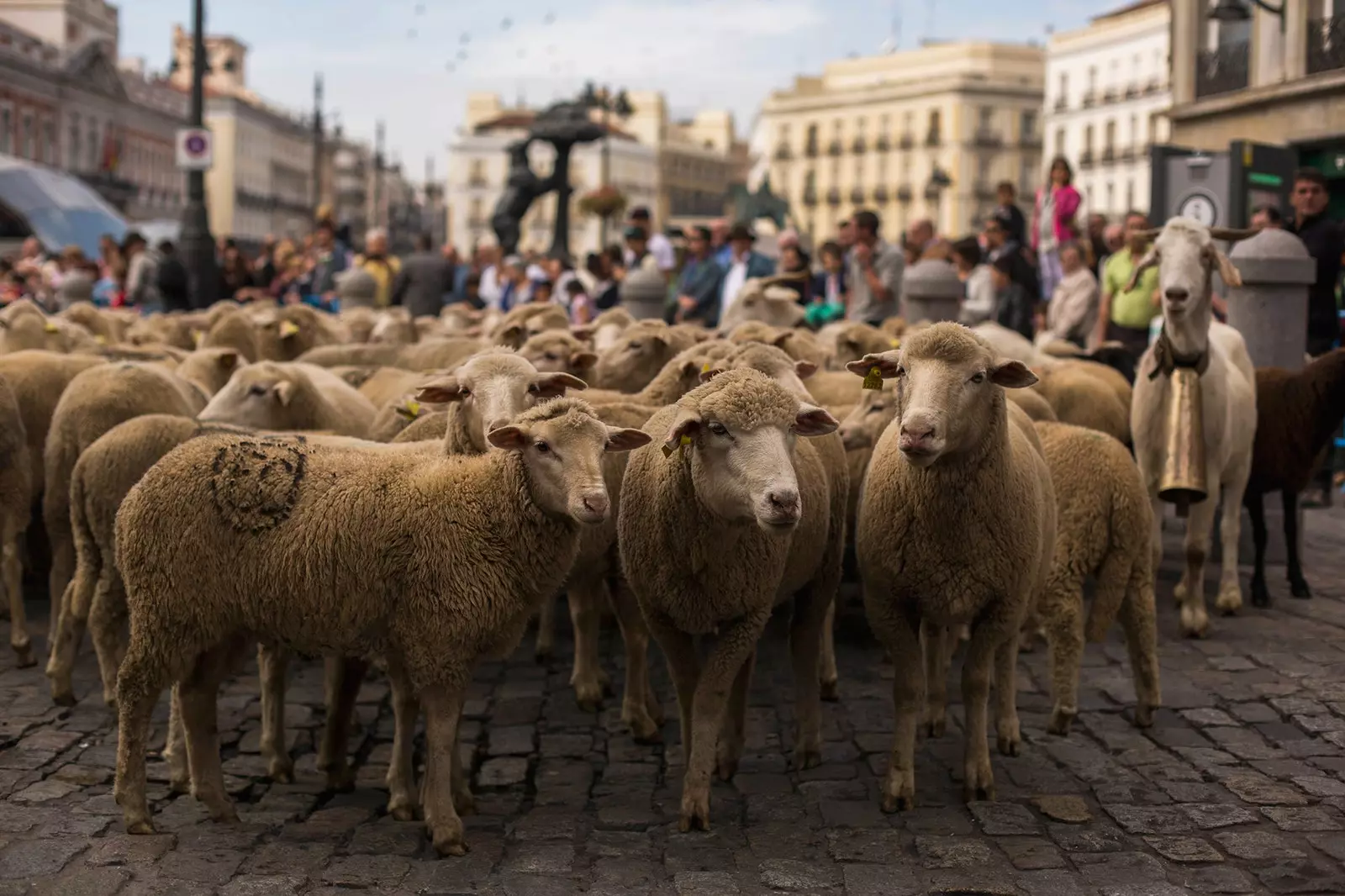
Sheep at Puerta del Sol in 2014
That is why it becomes increasingly necessary to go beyond the anecdotal nature of a herd crossing Madrid to look for real solutions.
“Extensive grazing contributes to the absorption of atmospheric carbon, reducing erosion, conserving water, favoring microbial activity and the incorporation of nutrients, improving the structure of the soil and its productivity”, wrote Jesús Garzón, president of the Trashumancia y Naturaleza Association, in the document The recovery of transhumance in Spain for sustainable rural development, conserving the biodiversity and mitigate climate change.
And there is even more, the transhumant movements promote the connectivity of ecosystems, making it easier for the different species to move around the peninsula in search of the most favorable environments for life at each time of the year; Y They play a crucial role in seed dispersal.
"In Spain, each transhumant sheep moves about 5,000 seeds daily and fertilizes the land with more than 3 kilos of manure , and each cow contributes 50,000 seeds and about 30 kilos of manure, traveling about 20 kilometers a day”, can be read in the words of Garzón.
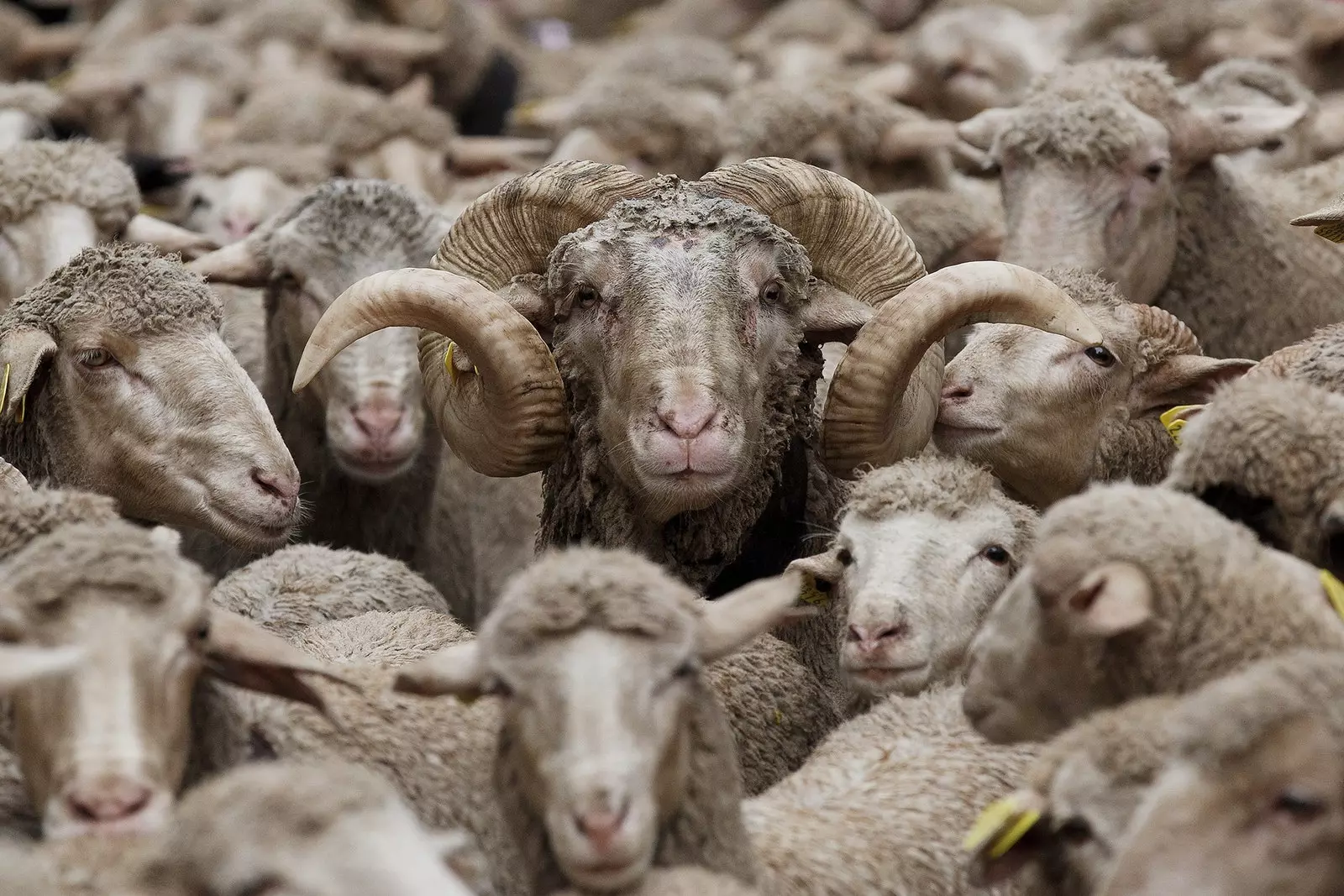
Madrid at rush hour
For this reason, since 1993 the pastors of the Council of the Mesta (refounded in 1992 after its abolition in 1836) have traveled almost 110,000 kilometers of livestock routes throughout Spain with some 400,000 sheep, goats, cows and horses; contributing to the long-distance dispersal of 116 billion seeds and almost 70,000 tons of manure over almost 500,000 hectares is no small matter.
They are still a long way from the three to five million sheep that, until the 19th century, traveled each year between the mountains in the north and the valleys in the south of Spain and from the international fame that merino wool once acquired, but the work of this Council, first, and of the Association, later, achieved, among other things, the enactment of Law 3/95 for the protection of livestock trails, which in our country reach 125,000 kilometers in length.
This Law of Livestock Routes also includes the priority that livestock transit has in the use of these "public domain goods" whom he qualifies as “inalienable, imprescriptible and unattachable”.
Hence, this Sunday you can see the sheep in the center of Madrid. “It is the royal ravine of the Puerta del Sol”, indicate Traveler.es from the Association. And it's been 26 years.
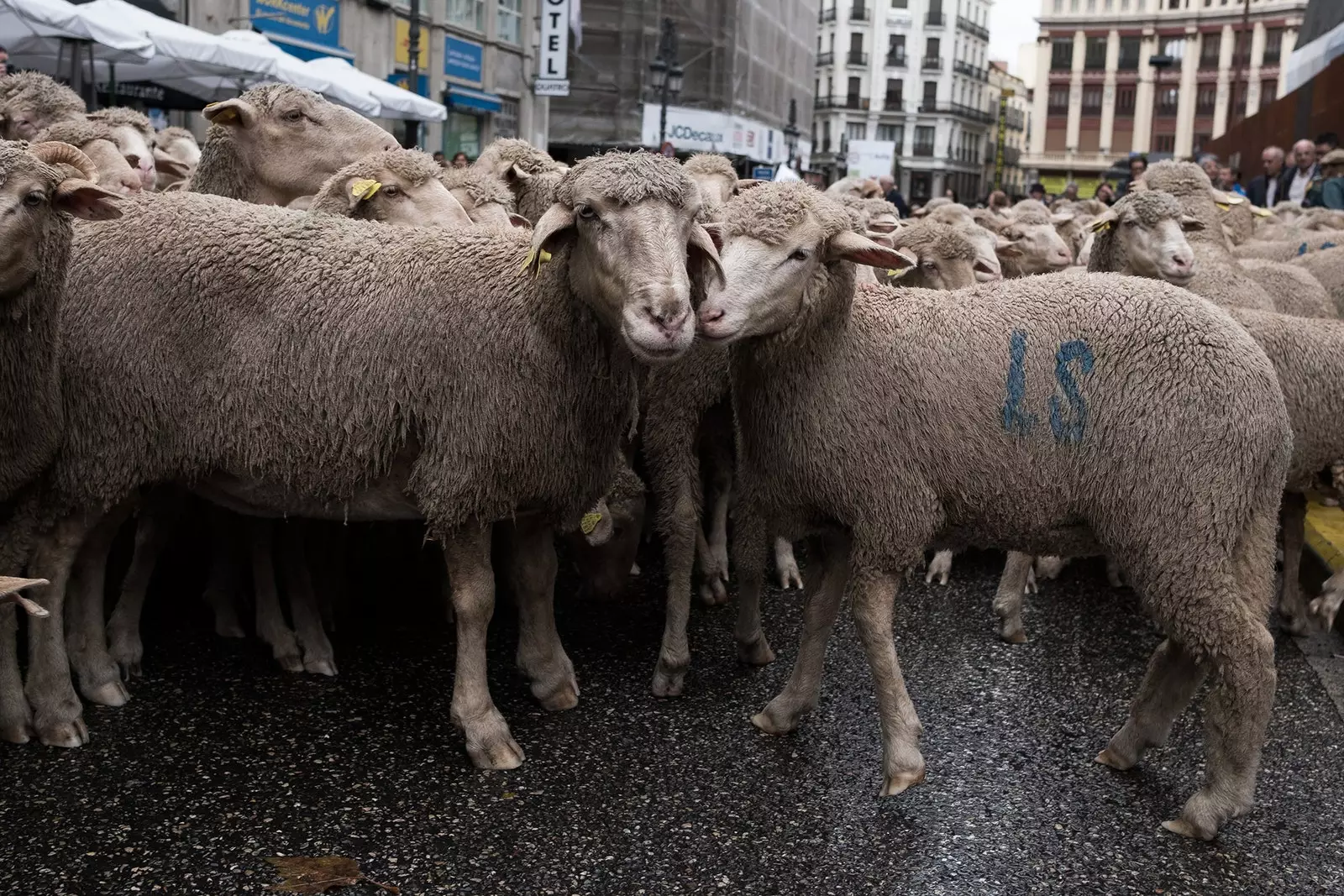
On Sunday they take to the streets
